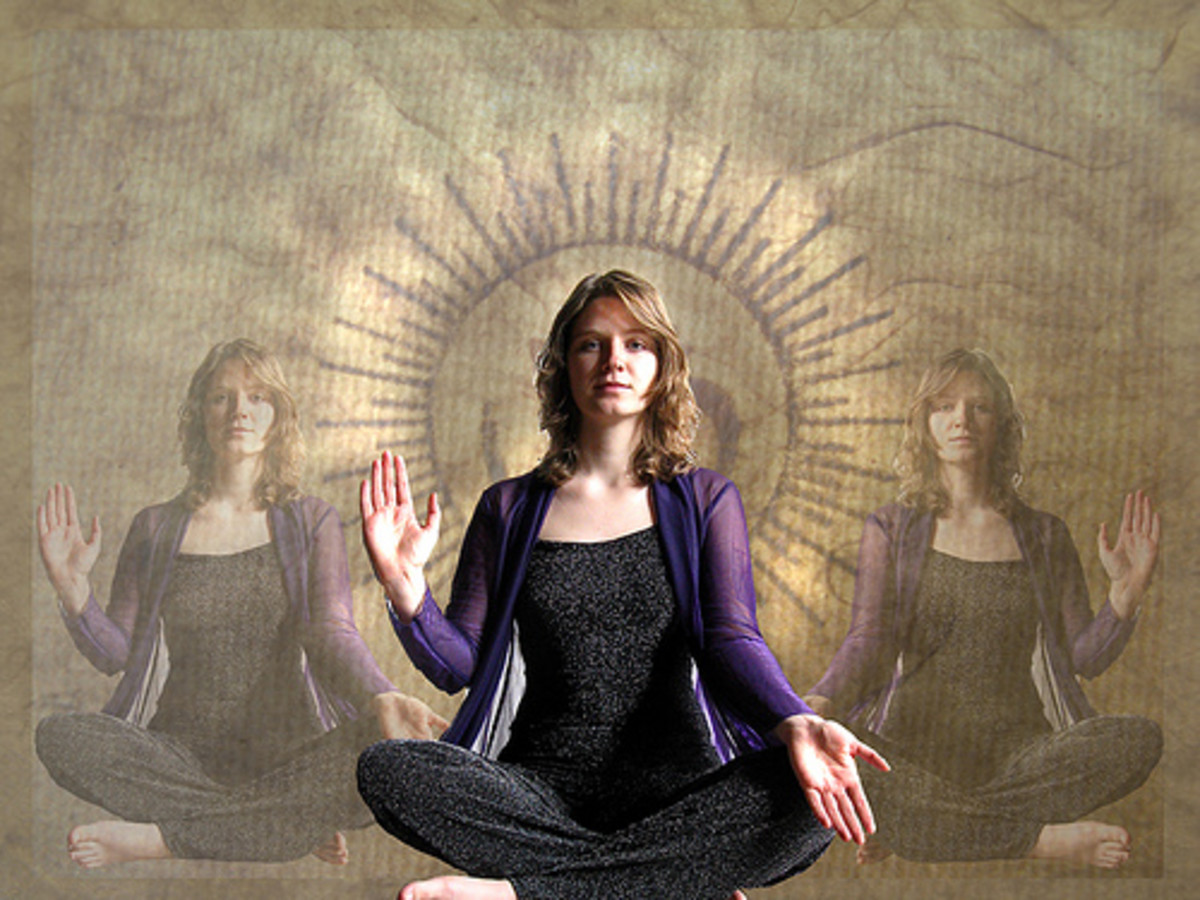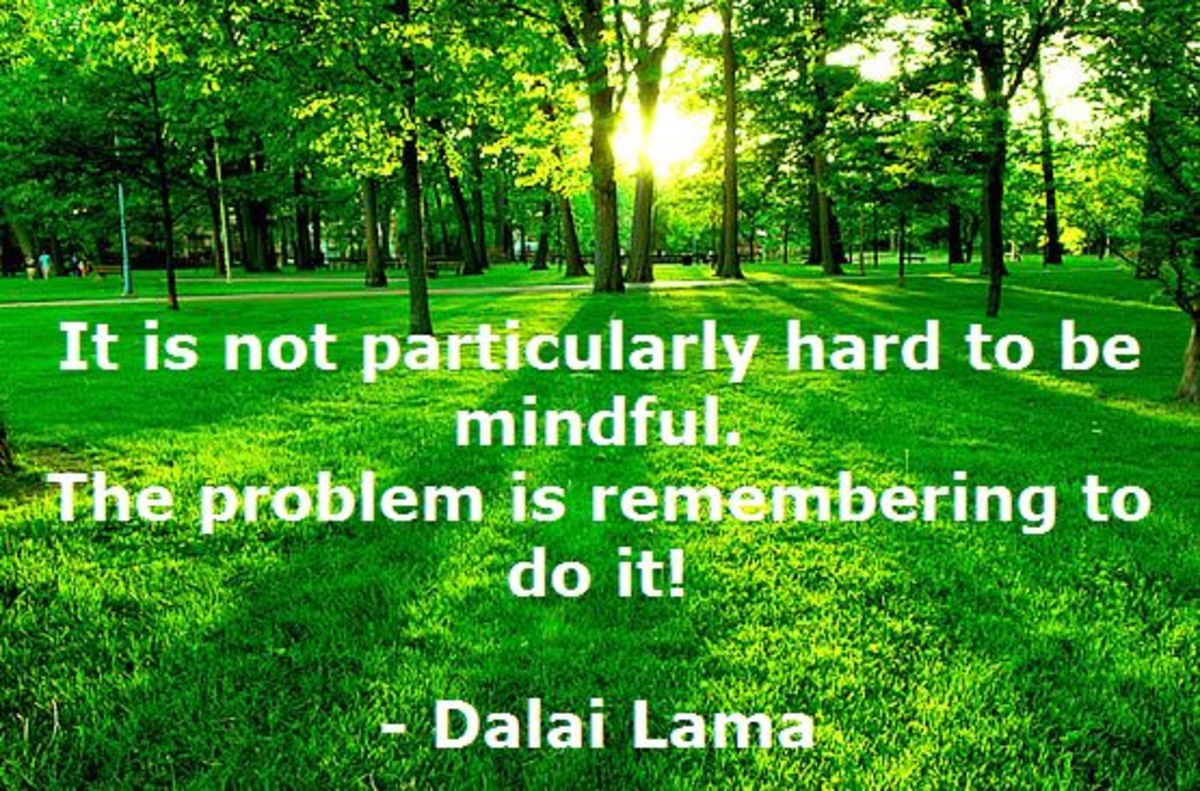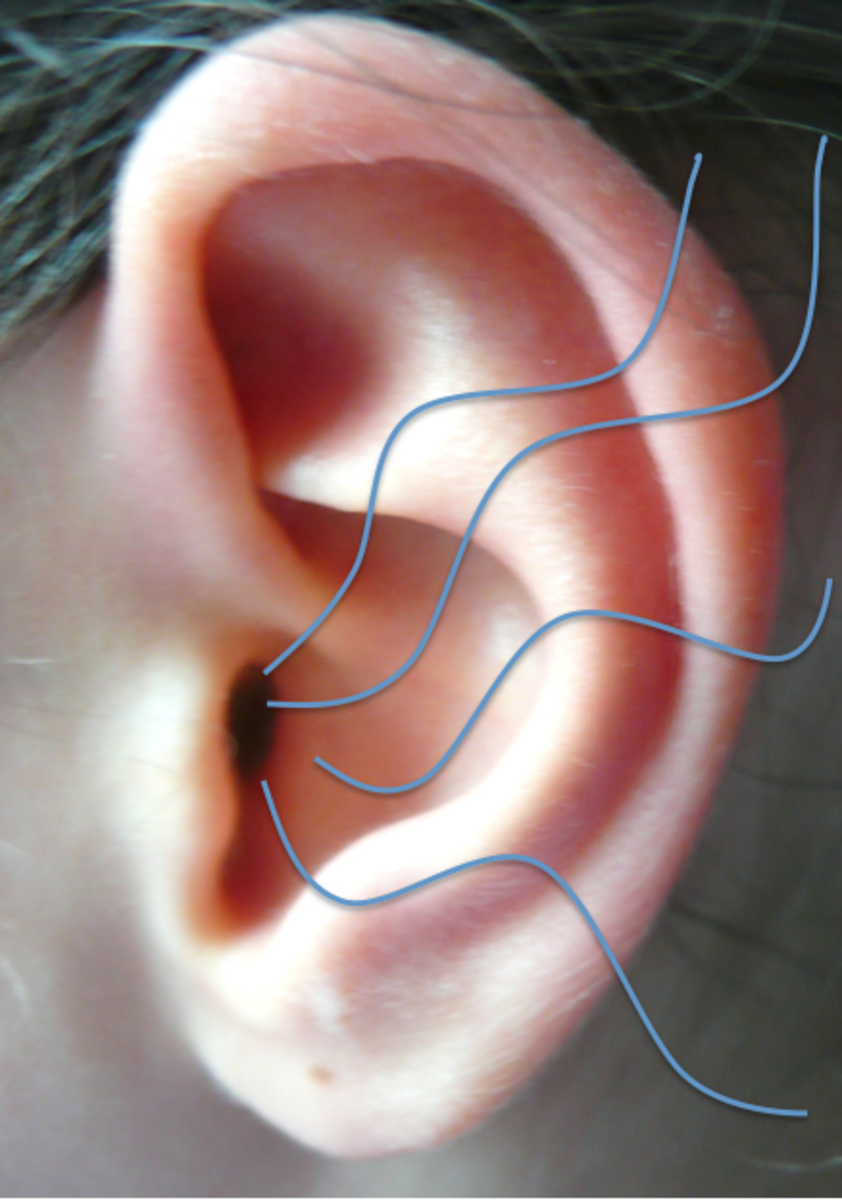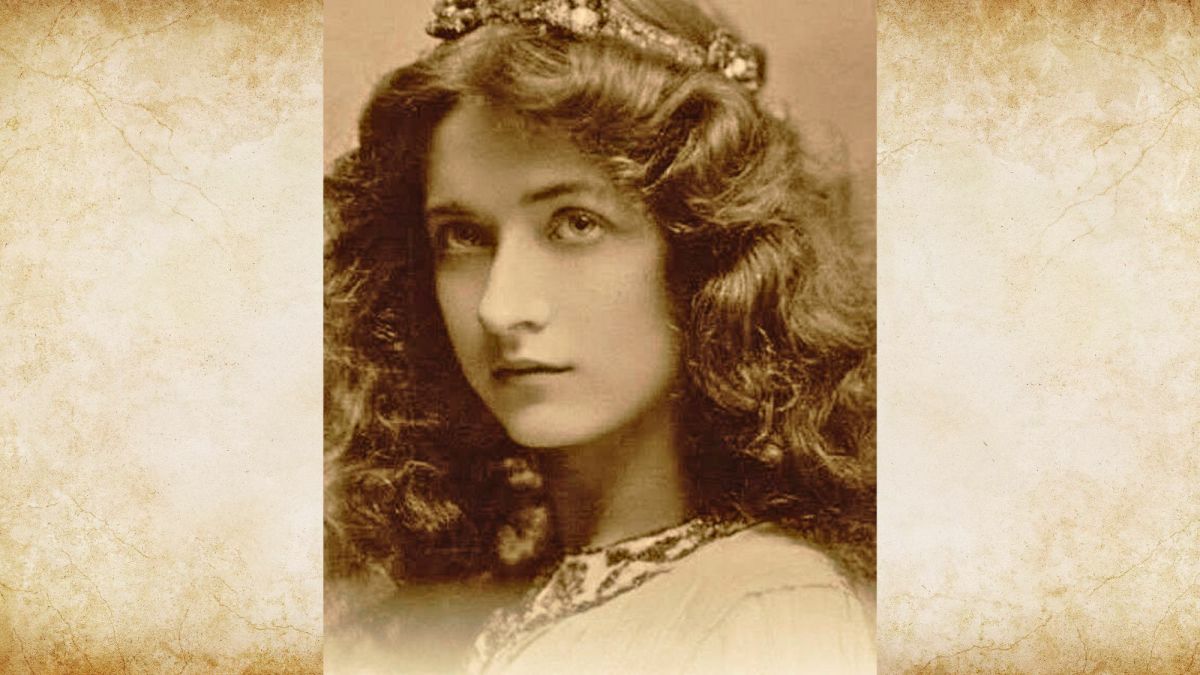Mindfulness Skills and Exercises
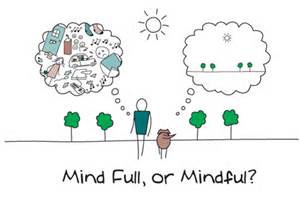
You can use mindfulness to reduce stress, boost your immune system, manage pain, and cope with painful life events and negative emotions. You can use mindfulness to increase your self awareness. The more aware you are of your thoughts, feelings and actions; the more effective you will be at the things that matter most to you.
You can apply mindfulness skills to improving attention and concentration, enhancing creativity and increasing positive emotions. You can practice mindfulness in order to enhance your performance on the job, in sports or in school. You can use mindfulness exercises to boost your emotional intelligence, improve relationships and relationship skills, and even to reduce addictive and eating disordered behaviors.
Chances are, you are already using mindfulness to some extent. You can use the skills and exercises below to help you use mindfulness more mindfully, or just to increase your awareness of how you are already using mindfulness! If you are taking medications, seeing a therapist, keeping an exercise routine or maintaining a nutrition plan to help with stress, moods or pain, you can add mindfulness to your other efforts. This will enhance the effects of your medications and other therapies.
Regular practice of mindfulness can change the structure of your brain. Your life experiences have influenced you in powerful ways, and have contributed to your current brain structure. Past experiences influence the way you respond to life events today. By practicing mindfulness you are learning to respond differently to life events. By responding differently, you are able to influence the direction of your life and the quality of your life. You are re-wiring your brain. Instead of staying stuck in your brain’s old ruts, you are constructing more effective channels. In time and with practice, these new more effective channels will begin to feel as “normal” and comfortable as the old ruts.
THE SKILLS
AWARENESS: Pay attention to only one thing while recognizing other things that are going on in the background. Use your five senses to notice background sights, sounds, smells, sensations, textures, colors and light. Check in on internal background “noises” such as pain, discomfort, urges, thoughts, feelings, sensations, memories, dreams, judgments, self talk, warning signs, red flags, hunches, values and preferences. Your subconscious mind uses these internal noises to communicate with your conscious mind.
NON – JUDGMENTAL: Learn to observe internal and external events without judging them, labeling them as “good” or “bad,” or trying to change them, get rid of them or do something about them. Simply observe them, accept them and respond to them with compassion and understanding. For example, “My stomach feels tight because I am upset with her. It’s ok to feel upset and it’s understandable that I would be upset by her actions.” You are observing your upset feelings without judging them in order to understand them.
PRESENT MOMENT: When you are fully present, in the present moment or having a present moment focus you are able to fully participate in the present – in what is happening here and now. You are not distracted by guilt from your past or filled with anxiety and worry about the future. You are here now. You are doing things that are meaningful for you today. You are not mindlessly doing what you have always done because you have always done it. You are not mindlessly going through the motions of a ritualized activity. You are paying attention to what you are experiencing in the present moment.
BEGINNER’S MIND: A beginner’s mind is what a child has who experiences something for the first time. Imagine you are a child, experiencing an activity for the first time. You have never experienced this before and you don’t know what to expect. You are excited and curious. You want to explore. Everything is new. You accept the experience as it is without trying to change it or make it something else. You have no past experience, so you don’t predict negative outcomes or try to avoid the activity.THE EXERCISES
BREATHING: When you are breathing mindfully, you are focusing your attention on your breathing. Notice how you are breathing. Notice slower breathing and fuller breaths. Notice your belly rise and fall as you breathe in and out. When your mind drifts away from your breathing, and it will, simply notice what caught your attention and gently shift your attention back to your breathing.
SOUNDS: Being mindful of sounds means you are focusing your attention on sounds; soft sounds, loud sounds, nearby sounds, distant sounds. Notice your response to sounds. Notice if you are annoyed by a sound or judging a sound; then gently re-direct yourself to listening to sounds without judging. When your attention drifts away to a thought, notice what thoughts you were distracted by, and gently return your attention to sounds.
MEDITATION: The purpose of mindfulness meditation is to help you stay in the present by becoming more aware and accepting of the present. The goal is to practice meditation for 20 minutes two times a day. During meditation, keep your attention on the present, noticing internal and external activities; feelings, urges, sensations, cravings, triggers, sounds, smells, tastes, thoughts and beliefs. If your mind drifts during meditation to thoughts about the past or worries about the future, gently re-direct your attention to the present. Mindfulness meditation is not intended for relaxation or for achieving higher levels of consciousness or bliss. It is intended to help you stay in the present. Some people are extremely anxious about their feelings and other people have difficulty sitting still for long periods of time. If this is true for you, beginning with only 2-3 minutes at a time at first might be more realistic, with a plan to work toward 20 minutes twice a day over time. Working on some of the other exercises first and adding meditation later is another option.
EATING: When eating mindfully, choose a place that is quiet and free of distractions. Before beginning to eat, look at the food. Notice what it looks like; its shape and size and color, and how it smells. Notice any internal sensations; salivation, hunger, urges before you taste the food. Now take a bite. Notice the taste, texture, and sensations in your mouth. Notice your chewing. Notice urges to swallow. Notice your swallowing. Notice your stomach as you swallow. Continue eating mindfully, noticing sensations in your stomach; feelings of hunger and fullness. Decide when you are finished eating based on when you are no longer hungry. Avoid eating while engaged in other activities, such as watching television, reading, or working. Notice feelings and thoughts associated with eating and urges to eat between meals.
BEGINNER’S MIND: Pick an object in the room that is familiar to you, and examine it with your beginner’s mind; that is, as if you have never seen the object before. Notice the shape, weight, texture and color of the object. Try to imagine what the object could be used for. As you continue to examine the object, do you notice anything about it that you may not have noticed before? When you put the object away, reflect on what you learned about the object that you didn’t already know. Consider what would happen if you approached other areas of your life with a beginner’s mind; people, places, objects, situations. How would these other areas of your life be the same or different if you approached them with beginner’s mind? What expectations do you now have that you would not have if you saw them for the first time?
THOUGHTS: When you are mindful of thoughts, you are focusing your attention on your thoughts. After getting comfortable and becoming mindful of breathing, allow yourself to become aware of whatever enters your mind. You just observe the thoughts without judging them as they come and go in and out of your awareness, without trying to engage them, continue them, stop them or change them. You just notice them. If you do seem to get stuck on a thought or a thought keeps returning, notice it, and then gently re-direct yourself back to observing your thoughts. It is normal to get caught up in thinking about thoughts. When this happens, return to observing thoughts.
EMOTIONS: Begin by getting comfortable and becoming mindful of breathing. Think of an event in the past in which you experienced a particular feeling that you want to get in touch with; happy, sad, glad, scared, upset, angry, proud, embarrassed, etc. Remember the situation and imagine you are in the situation now. What do you see, hear, taste, smell, and touch? Notice what thoughts, feelings and sensations come up as you remember the situation. Pay particular attention to your feelings. Is there one feeling or more than one? Notice any urges to hold onto or push away your feelings. Respond to these urges with understanding. Notice how your body responds to the feelings. Is there tension anywhere? Sweaty palms? Racing heartbeat? Urge to cry? Urge to run or hide? Urge to fix it or make it go away? Simply be aware of your emotions without judging or trying to get rid of them. Re-direct your attention to just observing your emotions. Notice any changes in your emotions during this exercise. Do they change or stay the same? Get stronger or weaker? Return to mindful breathing before ending this exercise, as it can be a difficult one. This exercise can be done with moderate, less intense feelings at first.
PHYSICAL SENSATIONS: Physical sensations can be urges, pain, tension, hunger and racing heart. Begin to focus on sensations involved in your body as your body contacts the surface you are sitting or laying on. Notice the parts of your body that are not in contact with the surface. Notice the sensation of air on skin or a sheet touching the skin. Notice the air temperature. Notice any body sensations: urges, cravings, hunger, pain, muscle tension, racing heart, stiffness, cramps, body temperature, etc. Notice any thoughts or judgments you are making about your physical sensations; then gently re-direct your attention to your body sensations. After 5-10 minutes, shift your attention back to the sensations you feel as your body contacts the surface of your chair or bed, then focus on breathing.
ALL ACTIVITIES: We can apply mindfulness to any activity at any time during the day. We can drive mindfully and do household chores mindfully; meaning we are keenly focused on what we are doing at the moment. We can practice mindfulness in the shower, during a walk, in a park, at work, during exercise, in a store, in the Dr’s office, in the waiting room, while dressing, while playing or drawing, etc. When we find feelings of guilt about the past or anxiety about the future creep in, or unwanted thoughts, memories or cravings, we gently re-direct our focus to the here and now.
CHANGING YOUR MIND
Mindfulness is not intended to be the cure all for everything that ails us. Mindfulness is a useful tool that you can apply to any situation. You can use it alone or along with other remedies. You can use mindfulness to enhance your current effectiveness or as a way to put past pain behind you. You no longer need to allow your past to control you, define you or determine your destiny. Mindfulness helps you respond differently to life events. By changing the way you respond to events, you are literally changing your mind and your own course for the future. How powerful is that!
- Meditation Training Program Shows Brain Effects Even Outside a Meditative State | NCCAM
Plain language summary of research sponsored by the National Center for Complementary and Alternative Medicine, U.S. National Institutes of Health (NIH).
- Personal Growth and Recovery
Learn more about mindfulness and other personal growth and recovery skills.


